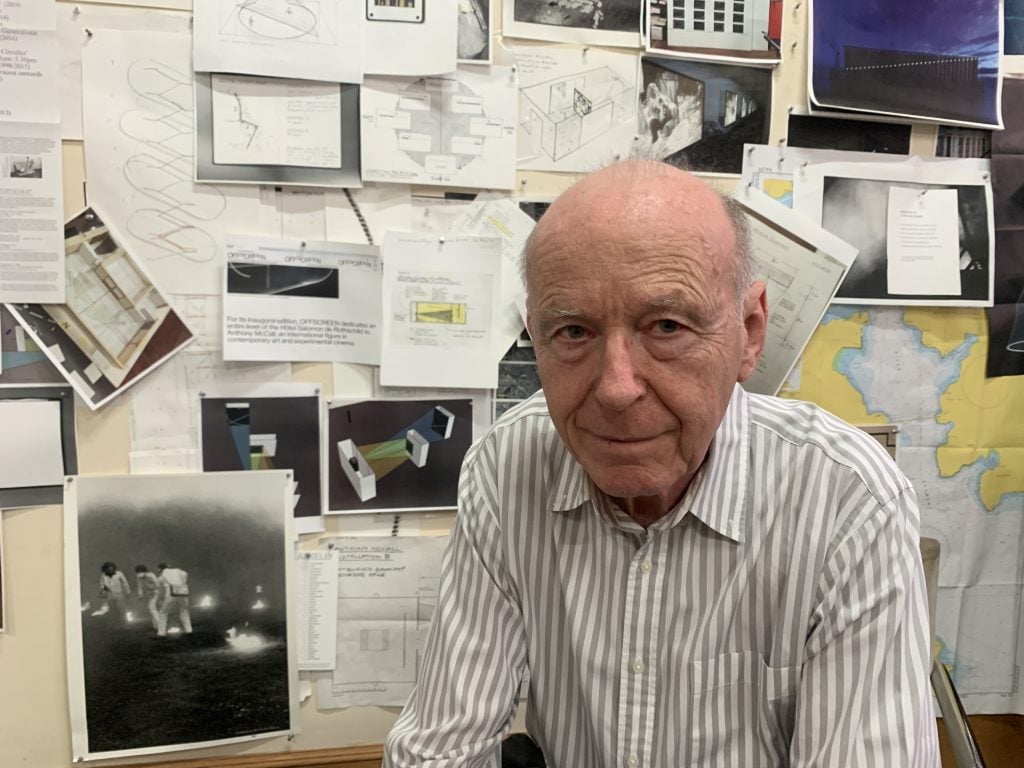Artists
Why Pioneering Light Artist Anthony McCall Is Transforming His Works With Sound
The artist is showing work at Sprüth Magers, London, as well as at the Guggenheim Bilbao and Tate Modern.
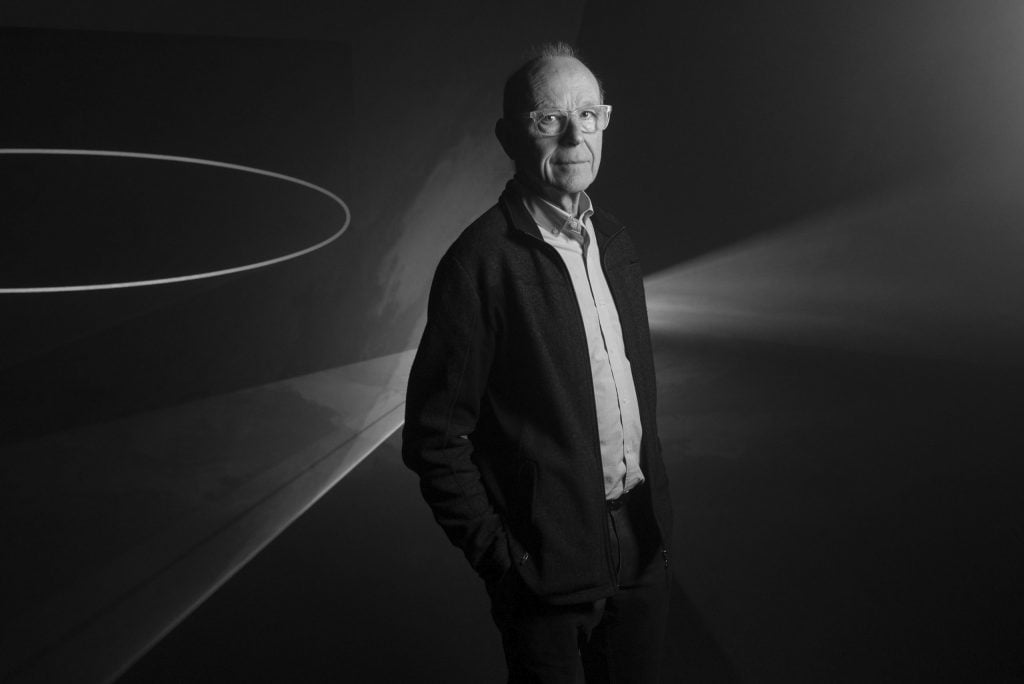
The artist is showing work at Sprüth Magers, London, as well as at the Guggenheim Bilbao and Tate Modern.

Katie White

Since the 1970s, artist Anthony McCall has pioneered “solid light” as a medium at the intersection of sculpture, drawing, and cinema. His 1973 work Light Describing A Cone (1973) was a landmark moment, positioning viewers amid projectors that cast out sculptural forms in space. Such works, with their evocative challenging of materiality, formed a critical dialogue with the works of artists like Richard Serra and Lucio Fontana. At the same time, these sculptures acted in conversation with experimental film, exploring the myriad ways light can shape realities.
Experientially, McCall’s works tap into the primal experience of light cast against a darkened cave wall and our instinctual responses to shifting movement. While the technologies behind McCall’s works have changed over the decades (more on that below), his investigation of light as a medium has continued to intrigue and provoke viewers, artists, and critics.
Working in the same TriBeCa studio he has kept since the mid-1980s, the British-born, New York-based artist has been busy at work over the past few months; this September, the artist will open “Raised Voices,” a solo exhibition at Sprüth Magers’s London outpost (September 13– December 21, 2024).
In “Raised Voices” McCall will present a horizontal solid-light projection that transitions from a unified beam to create translucent forms incorporating mist—it will be accompanied by a score written for the work by composer David Grubbs. The exhibition also features drawings and photography rooted around McCall’s investigations of smoke. Concurrent with this show, McCall is the subject of two museum exhibitions: “Split Second” at Museo Guggenheim Bilbao and “Solid Light” at the Tate Modern, London. These three overlapping exhibitions offer different perspectives on a singular practice.
Recently, McCall told us about his studio life, from his new perspectives on older works, as well as what it was like to create a soundtrack for this sculptures.
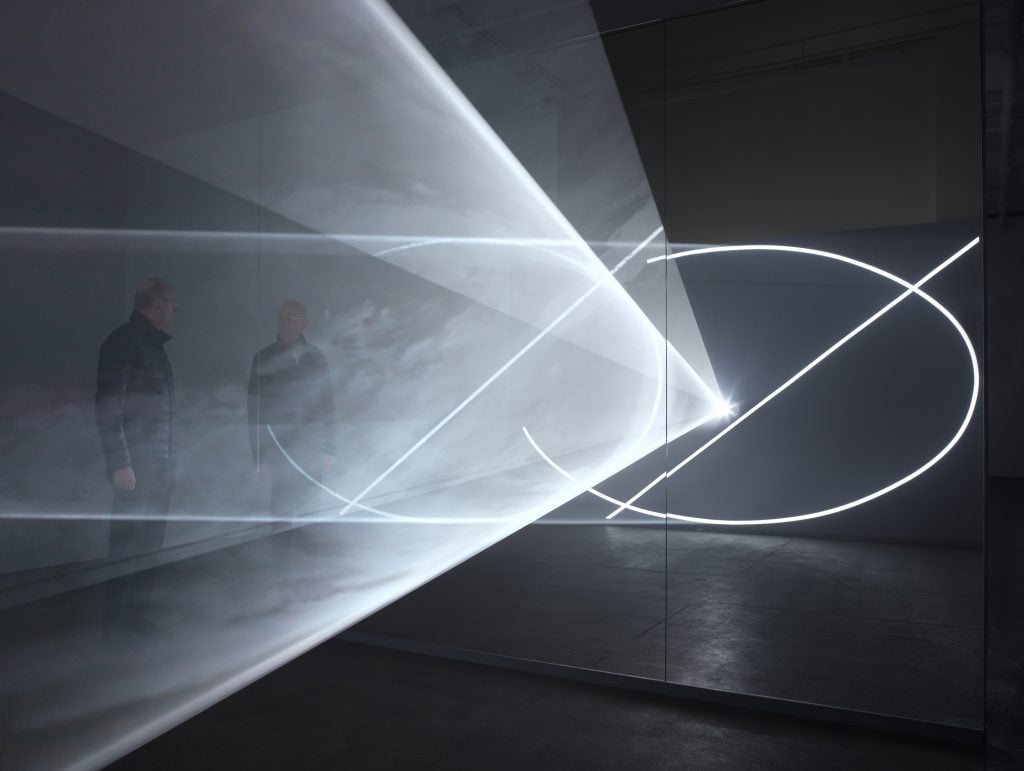
Anthony McCall, Split Second (Mirror) (2018). Installation view, Sean Kelly, New York, 2018. Photograph by Daniel Bradica.
Tell us about your studio. How does it compare to other studios you’ve had?
My current studio in TriBeCa I’ve had since 1984, a typical 6-storey loft building, with a freight elevator. When I first took it over, the deserted floor contained only a large rusting safe containing feathers and an old yellowed pamphlet describing chicken diseases. Prior to that, I shared a loft with Carolee Schneemann on West 29th Street in the old fur district; no freight elevator, just a flight of wooden stairs that started on the ground floor and rose straight up to the sixth (we were on the sixth and the roof was prone to leaks). Towering as a massive presence nearby was the Empire State Building.
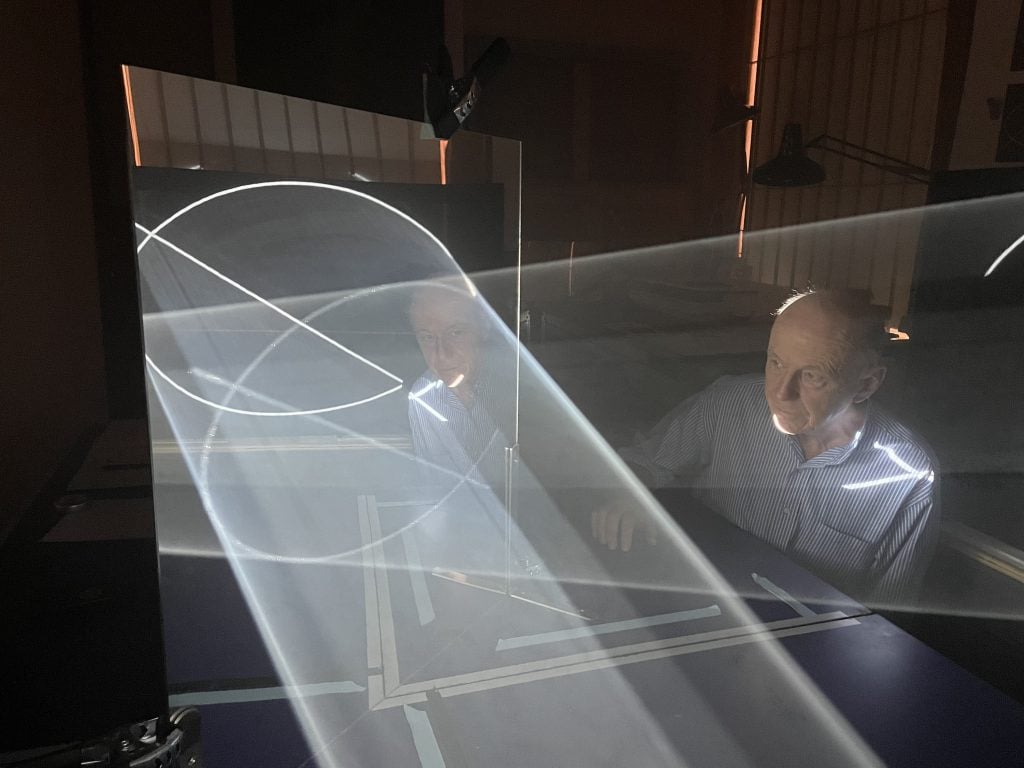
Anthony McCall in his studio with Split Second Mirror III maquette. Courtesy of the artist, Martine Aboucaya Gallery, and Sprüth Magers.
You’ve been making works for more than half a century. Do you still draw from your early work, such as 1973’s Line Describing a Cone? How do you see your work now in relationship (if at all) to your earlier work?
Social circumstances have changed, and technology has transformed how we work. Mediums have become flexible, but the shifts and changes stay in dialogue with early work, sometimes completely altering the meaning of that work as well as influencing the direction of the recent work. For instance, Rooms (2021) has much in common graphically with Four Projected Movements (1975). Thanks to the new version being vertical in orientation rather than horizontal, and thanks to it incorporating a soundtrack synchronized with the line drawing, the new version now reveals latent possibilities in the 1970s installation that would have been unthinkable then.
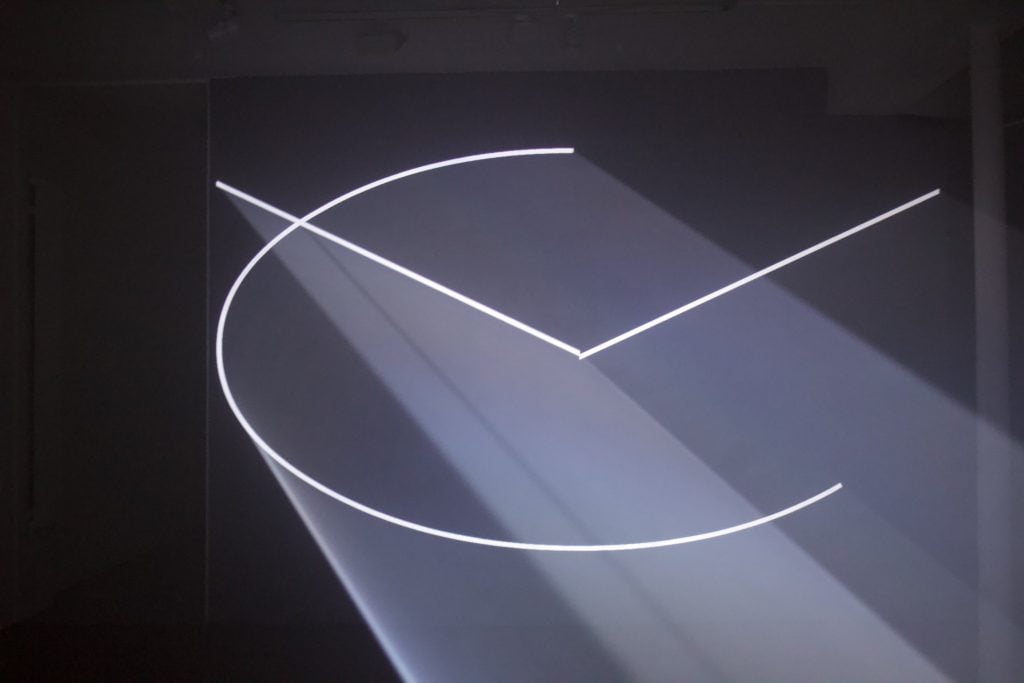
Anthony McCall, Raised Voices (2020) © Anthony McCall Courtesy of the artist, Martine Aboucaya Gallery, and Sprüth Magers. Photo: Celia Rozec.
What technologies are you using? Are you still using the same styles of projectors and lights you have historically, or have you adopted new methods?
My current work is made using computer-generated line drawings which are projected onto a wall using a digital projector; visibility of the three-dimensional forms is guaranteed by the use of a small haze machine within the installation space. These methods are in marked contrast to those of the 1970s when the line drawing was drawn by hand using a ruling pen and white gouache, animated frame-by-frame on a Bell and Howell 16 millimeter film-animation stand, and projected onto the wall using a 16-millimeter film projector. Visibility was produced (quite unreliably) using ambient dust and cigarette smoke.
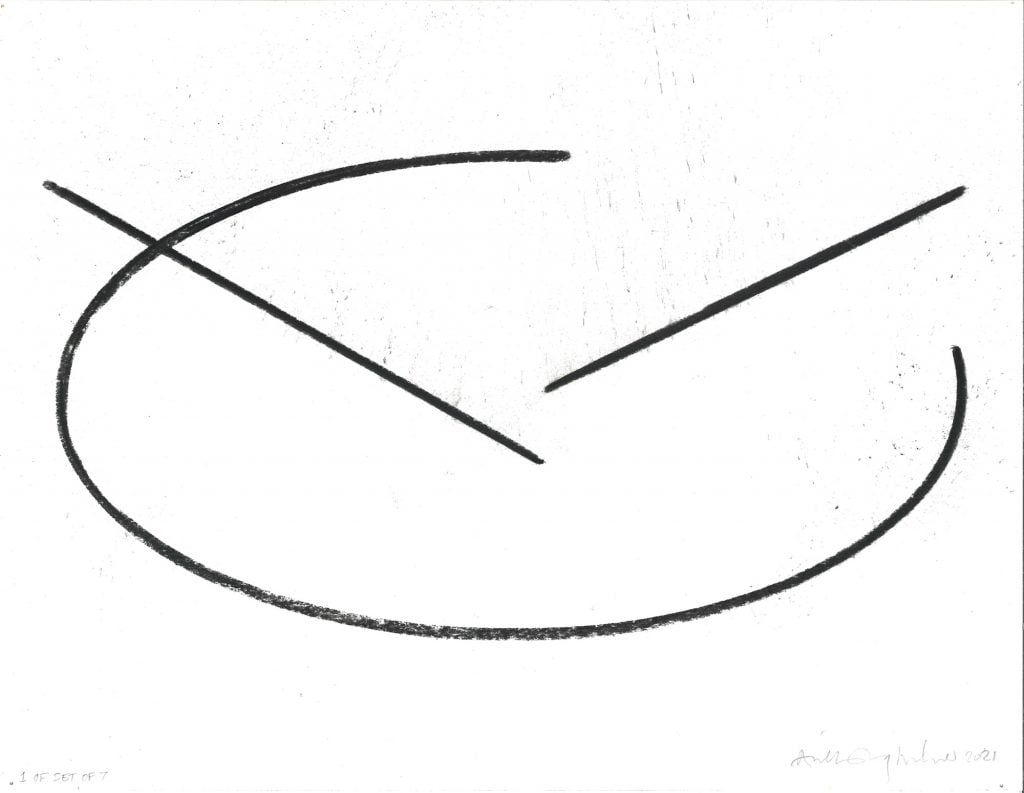
Anthony McCall, Raised Voices (2020)
Charcoal footprint drawings, set of 7
© Anthony McCall
Courtesy of the artist and Sprüth Magers
I’ve often heard your work described in terms of sculpture. Do you think that’s accurate?
Sculpture is part of the story, but only part. Any one of my solid-light pieces can be seen as existing where four practices overlap: cinema (forms that mutate and change over time); sculpture (three-dimensional forms that must be circumnavigated by the visitor); performance (conversion of the visitor into part of what is being looked at); and drawing (the fundamental medium which is present from the earliest sketches to the full-sized, projected, three-dimensional object).
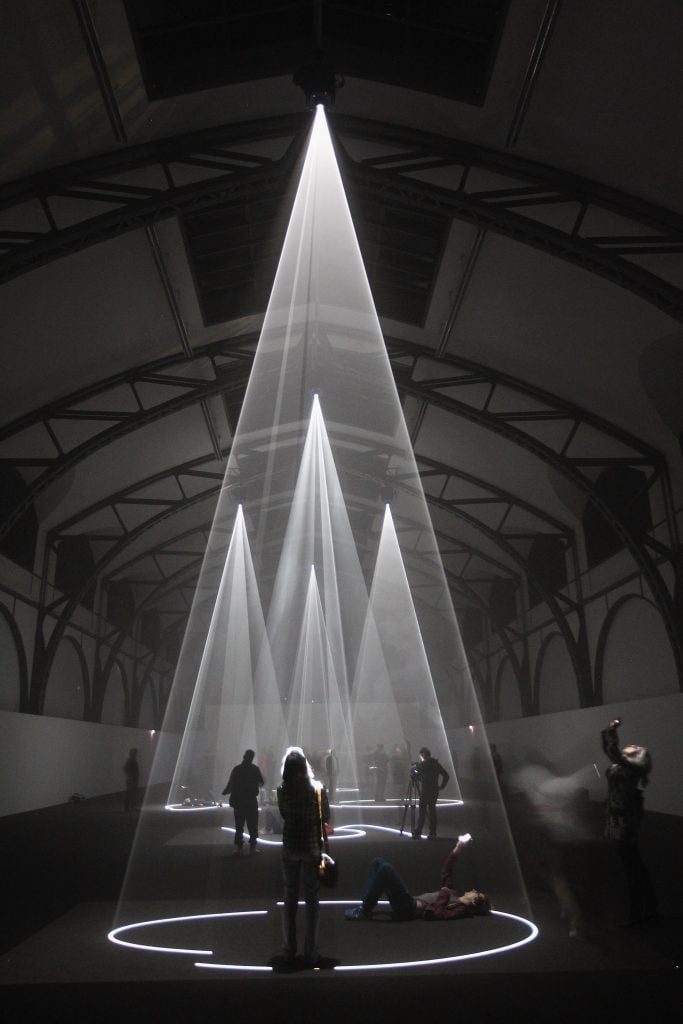
Exhibition view of “Anthony McCall” at Hamburger Bahnhof, Berlin.
From front to back: Meeting You Halfway, Breath III, Between You and I, and Coupling. Photograph by Sean Gallup/Getty Images.
Raised Voices will include sound, a soundtrack by composer David Grubbs. What was that process like?
I’ve enjoyed collaborating with musician and author David Grubbs on and off on projects of varying sizes for over 20 years. I think our first really extended project was in 2009 with my two-projector, “Leaving With Two-Minute Silence”. David composed the sounds of truck traffic on Canal Street, combining them with water sounds and ringing buoys out in New York Harbor. However, most of my solid-light works have been silent, though I have now come back to incorporating sound as a central element, and David has been an essential part of the process. For example, in addition to the horizontal Raised Voices (2020), which included occasional voices and police sirens in the distance, there were also two vertical works: Skylight (2020), which included an intermittent thunderstorm, and Rooms (2020), in which a growing or diminishing ellipse was tightly synchronized to David’s composition produced on his lap steel guitar with a slide and EBow.
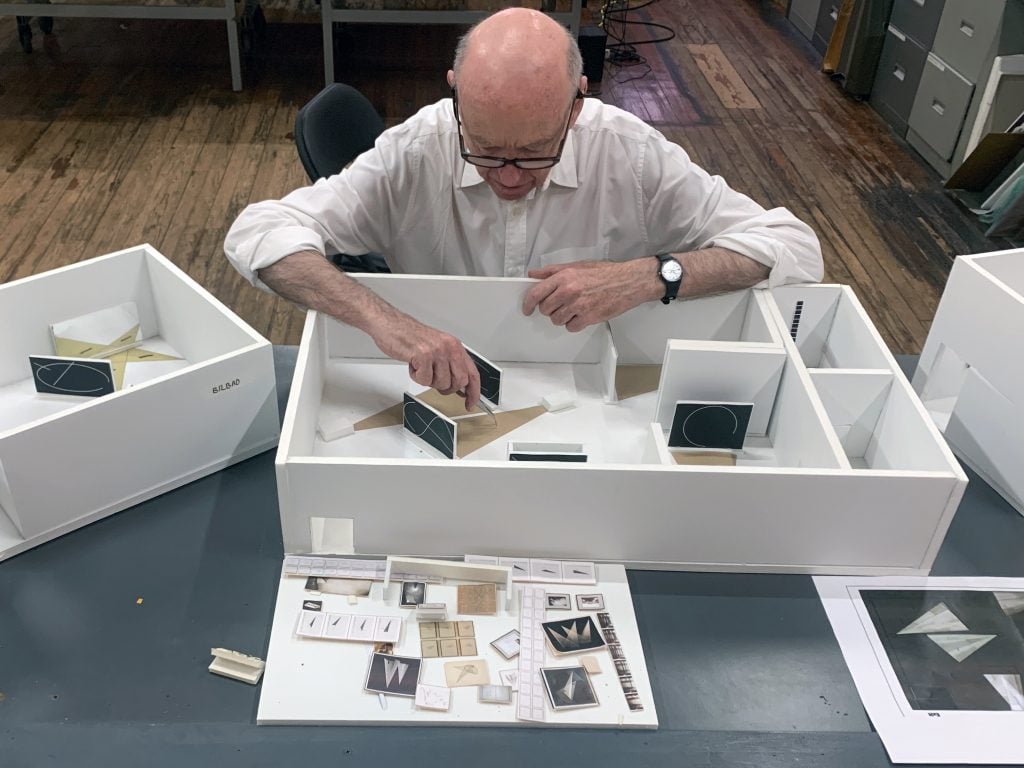
What has it been like to have these three shows (Sprüth Magers, Tate, and Guggenheim Bilbao) come together?
It was thrilling to have multiple invitations! But since two of the shows opened within days of each other, it turned into a dense period of preparatory work for the studio. We got through it by building scale models of each of the spaces which enabled us to both follow and sometimes lead the design process. Actually, what was most satisfying apart from the pleasure of working with highly capable curators and installation crews, was the fact that we were able to put together three quite different exhibitions. For instance, the Tate Modern show opened with Landscape for Fire (1972) and Line Describing a Cone (1973), then moved chronologically through three large installations, finishing with Split Second Mirror I (2018), the first of the mirror works. The Guggenheim Bilbao show was built from three pieces: a new two-projector mirror installation Split Second Mirror IV (2024); an early slide work for Carousel projector, Miniature in Black and White (1972), and finally, a series of seven photographic works on paper, “Smoke Screen I-VII” (2017). The Sprüth Magers exhibition is introducing Raised Voices, the only work with sound in the three exhibitions.
What are you working on right now?
I’m preparing an exhibition that will take place this fall at MAAT in Lisbon, which sits just outside the city center on the River Tagus. In addition, I’m in the foothills of a new work, but I am simply following my nose at this point, and would be hard put to describe where it is leading, other than to note that I will be exploring the use of a new type of “Wipe,” which may threaten my dependence on darkness.
